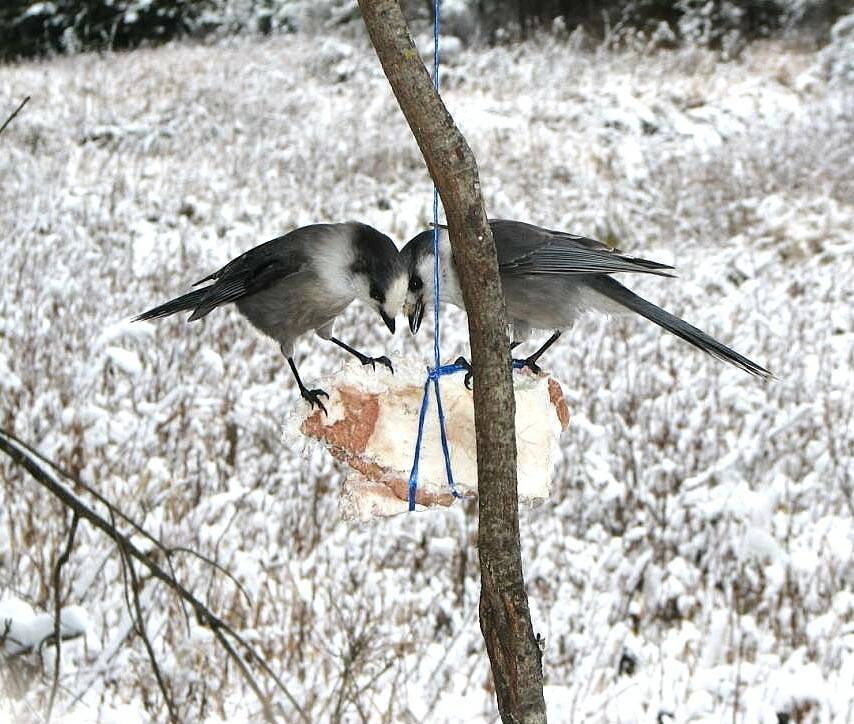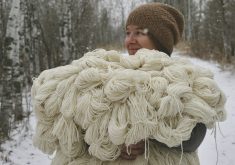The newest edition of The Prairie Garden highlights the latest and greatest in Manitoba-hardy flowering shrubs and roses.
“Flowers are truly a lifeline to another world,” guest-editor Philip Ronald said in a virtual launch of the periodical.
The Prairie Garden, which is produced by a group of volunteers, is Canada’s only Prairie-specific gardening annual and has been published in Manitoba since 1937.
“In a year with so much uncertainty, aren’t you thankful for plants?” said Ronald in his introduction to the book.
Read Also

Hunting with whiskey jacks
Canada jays, or whiskey jacks, are bold little deer hunting pals that don’t mind getting close, if it means a piece of the offal or deer fat left over from a successful forest hunt in Manitoba.
Ronald is a horticulturalist, orchard co-owner, and researcher with Jeffries Nurseries. In both the book and in the online launch, he shared results from trials he’s conducted at Jeffries Nurseries in which he tested more than 200 shrub cultivars for hardiness to the Manitoba winter.
Outstanding “graduates” of the trial included Lotus Moon pearlbush, said Ronald. ‘Lotus Moon’ is a spring bloomer featuring clusters of seven to 12 round flowers.
It proved itself completely hardy to winter at Portage la Prairie, and is pest resistant and non-suckering, wrote Ronald.
‘Concorde’ barberry also passed the test with only a few dry branch tips at the end of the worst winter.
This edition of The Prairie Garden also reprises the 2006 edition on roses — now out of print.
There’s a reason why the roses edition is out of print, outgoing editor Linda Dietrick told the Co-operator. People love roses.
This will update rose lovers on what’s new in Prairie-hardy roses.
Contributor Rick Durand also highlighted the many amateur rose breeders across the Prairies who are hybridizing their own hardy rose cultivars.
These include Charles Pilgrim, of Winnipeg, who started with breeding lilies and moved to roses for a greater challenge. He’s spent decades perfecting a Prairie-hardy, disease-resistant yellow rose and has tended between 6,000 and 10,000 rose seedlings per year.
University of Manitoba professor emeritus, Colin Briggs, tells the history of rosehip syrup, used as a vitamin source in Great Britain during the Second World War.
A government campaign mobilized the Women’s Voluntary Service and Boy Scouts to gather rosehips and paid them “threepence” per pound of gathered fruit. The goal — collect 510,000 kg of rosehips.
Briggs recalls his daily dose of rosehip syrup and cod liver oil as a wartime child in London.
New this year, The Prairie Garden’s website has a comprehensive index of all topics it has covered going back to 1937. Some of these articles are available in samplers online. Dietrick said they’re in the process of digitizing historic issues. She said she wasn’t sure how these would be used.
Dietrick announced that the 2022 Prairie Garden topic will be “gardening in small spaces” — inspired by those who took up gardening during the COVID-19 pandemic, and may be looking for guidance on how to maximize a small space.
After five years with The Prairie Garden, Dietrick is stepping down as editor. Dorothy Dobbie will edit the next edition, known for publishing the Manitoba Gardener (now Canada’s Local Gardener).
Issues of The Prairie Garden are for sale through its website, theprairiegarden.com, at McNally Robinson Booksellers, and at several greenhouses and garden centres across the province.
















